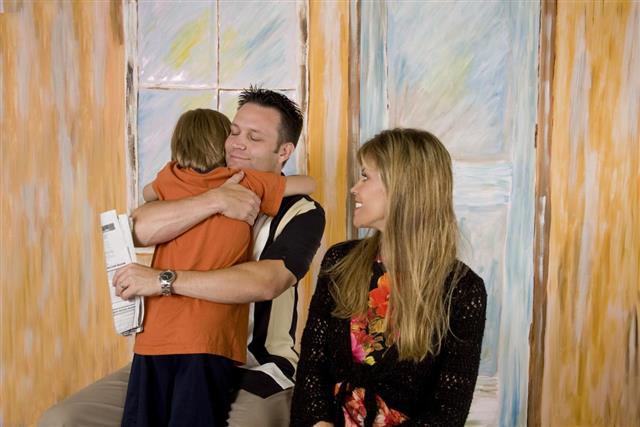
Peer pressure is an inevitable part of a child’s life. It can however, be tackled by teaching children the right approach to such situations. This can be done by performing some simple activities.
“”Either you change your mind, succumbing to peer pressure and adopting the new memes as your own, or you struggle with the extremely uncomfortable feeling of being surrounded by people who think you’re crazy or inadequate.”
-Richard Brodie
This quote clearly explains the state of mind of almost every child who has had to deal with peer pressure. It is the pressure faced by a child that takes advantage of the desire for conformity or general acceptance with the rest of the crowd. It is a natural human tendency to want to do ‘what everyone else is doing’ or to be part of the ‘happening’ crowd. However, the consequences of relenting to peer pressure are not always positive, and can have a severely negative impact on a tender mind such as that of a child’s. It is essential then, that as a teacher/parent, you take charge of the situation and teach your students/kids how to deal with peer pressure.
Teaching Students to Deal with Peer Pressure
Activities for the Classroom
Every activity should ideally begin with a healthy discussion that should include a description of the exact situation and the point of view of the child on the subject. This is a sensitive subject as every child has experienced peer pressure, or may have to do so in the future; this can leave a different impact on different minds. Dealing with this issue is slightly challenging but can be eased by trying out some of the following activities. Do note that the involvement of parents in some activities may be necessary in some cases in order to help kids overcome their fears about peer pressure.
Identifying the Types of Peer Pressure
One must remember that peer pressure needn’t always be negative. It has both, negative and positive effects. It can be positive, particularly when it encourages the development of a positive attitude, teamwork, and healthy values. This kind of peer pressure is acceptable, and in fact, healthy for students. On the other hand, friends who coax them into doing things that they don’t want to do, that leads to the development of a negative attitude and alienation from others, refers to negative peer pressure. Sometimes children feel guilty about doing something, and to rid themselves of this guilt, they try to convince their peers to follow suit. Thus, the first activity that should be conducted requires identifying the type of peer pressure and then teaching children about what they may be or have already been exposed to so that they can address it correctly.
Sharing Personal Experiences
It may be difficult to get students to speak about their experiences with peer pressure, but one of the most important steps in overcoming its effects is encouraging them to open up about their confrontation with a particular situation and how they dealt with it; this can serve as a warning for other students. For instance, different students may have come across different kinds of peer pressure:
- Some peers try to convince kids for some time, and upon refusal, give up on the subject.
- In some cases, a child’s peers may threaten to end the friendship, or with other consequences, particularly if the child is dependent on the peer for any reason.
- Most of us may have experienced the necessity to be considered ‘cool’, to be able to stand out of the crowd. This is an excuse that is used by most peers to get other kids to join them.
- In case a child refuses to succumb to peer pressure, peers may end up insulting him/her, and even spreading false rumors about him/her, as a way of seeking revenge.
Get your students to speak about their experiences, and tell them how to deal with it the next time they are faced with such a situation. When a child knows what to expect, he/she is prepared to take the necessary action to deal with the situation. If a child refuses to open up in front of the classroom, get him to talk to you privately, and then narrate the incident using different names as an example of peer pressure for the rest of the classroom.
Taking the Necessary Action
Children need to be aware of the effects of peer pressure and how to deal with it. To do so, one class is not going to suffice. It has to be ingrained in them, that refusing to succumb is not going to cause them any harm, and in fact, standing up for themselves will enhance not only their self-respect, but also respect in the eyes of their peers. Suggest some solutions that would help them in resisting peer pressure. Activities and suggestions for the same are given below:
- Once students realize that their peers are up to no good, and will eventually force them also into becoming a part of their activities, they should stop hanging out with those peers.
- Constant refusal to succumb will eventually have the peers give up on them. It may lead to loss of friendship, but what good is a friend who forces you to do something you are not comfortable doing?
- If these tactics don’t seem to work, then teach them how to make an excuse about it, perhaps that their parents will not permit such an action, or that if they come to know they will be in serious trouble.
- Teach them to feign ignorance on the subject, or switch to another subject, and carry on pretending they have not been asked anything of the sort.
- Tell them that if they consider the action wrong, they ought to explain to their friends also that it is not the right thing to do. Peers may not be true friends, but your student can be one. Even if the peers don’t agree, at least they’ll know that your student is not going to give in.
- Teach your students the importance of self-respect and self-confidence. As mentioned earlier, when a student is confident of himself, no matter what his/her peers say or do, or no matter how many false rumors are spread about him/her, people are going to know what the reality of the situation is.
- Imbibe core values in your students. Again, the importance of certain basic values is what forms the foundation of a strong personality. Children ought to be taught the importance of personal values and beliefs. This will help them differentiate between right and wrong.
Role Playing
Role playing is an effective way of getting the message across without having to explain much. Presenting various scenarios to students where they have to deal with peer pressure, and their natural response to it, will help you identify their problem areas and will enable you to deal with it in the required manner. This activity can be performed by dividing your students into equal numbers of groups and presenting to them, several possible situations that involve peer pressure. A set of two students will enact the situation for the rest of their group, and their group will identify the kind of peer pressure and whether the response elicited by the actors was right or wrong. They may also suggest remedies to deal with it.
Getting children to understand the importance of individuality is challenging, particularly when their comfort lies in conformity. Several times, students give in to peer pressure than resisting it, simply because it seems like the easy way out. This is the reason why such activities are important. It gives them a perspective about the situation, about what they did right or wrong, and has an impact on their overall personality and behavior. When the reasons leading to peer pressure and the actions taken are openly discussed, students will be able to understand how to tackle this inevitable part of their lives.









